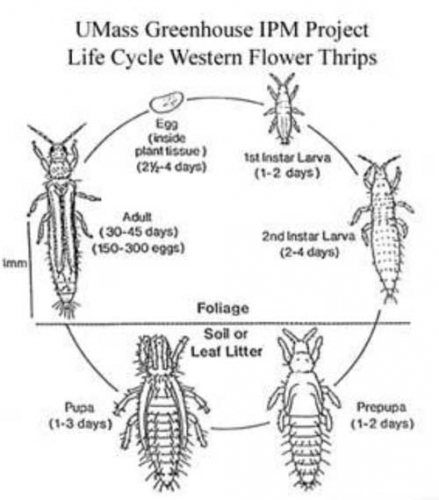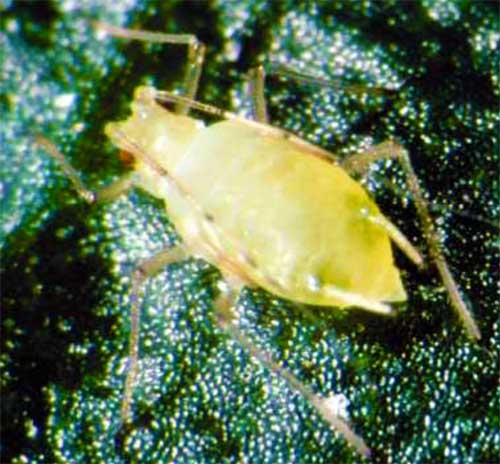Plants in your greenhouse? Scout for thrips and aphids now
Greenhouse growers starting plugs or rooting cuttings should check for thrips and aphids as we enter winter. Suggested insecticide treatments may be needed if these pests are detected now to avoid problems in spring.
Some growers have already noticed an early infestation of thrips (Photo 1) or aphids (Photo 2). Check all incoming cuttings, plants under the benches, overwintering perennials and any new plugs. If this is the case in your greenhouse, step-up the scouting, spray the hot spots, and get them under control now.

Photo 1. Thrips life cycle. Photo credit: Univ. of Mass.

Photo 2. Foxglove aphid. Photo credit: Ontario Ministry of Ag.
Michigan State University Extension advises that growers place yellow sticky cards in their plugs and cuttings to detect thrips activity. They can also tell you about shorefly and fungus gnat levels.
If you detect increasing numbers of thrips or aphids at this time, consider the following treatment choices:
Thrips: Aria, Avid, Mesurol, Orthene 97, Overture, Pedestal, Pylon, Safari (spray or soil drench), Sanmite, Tristar, and Conserve. Note: some thrips may be resistant to Conserve and Safari.
Aphids: Aria, Azatin, Benefit, BotaniGard, Decathlon, Discus, Distance, Endeavor, Enstar II, Flagship, Kontos, Marathon, Ornazin, Orthene 97, Precision, Safari, Tame, Talstar, Tristar
The idea is to keep greenhouses as clean as possible during winter to avoid an explosion of activity in March and April when conditions are right for the insects. Some good scouting and spot-spraying at this time will save many headaches later on.



 Print
Print Email
Email

